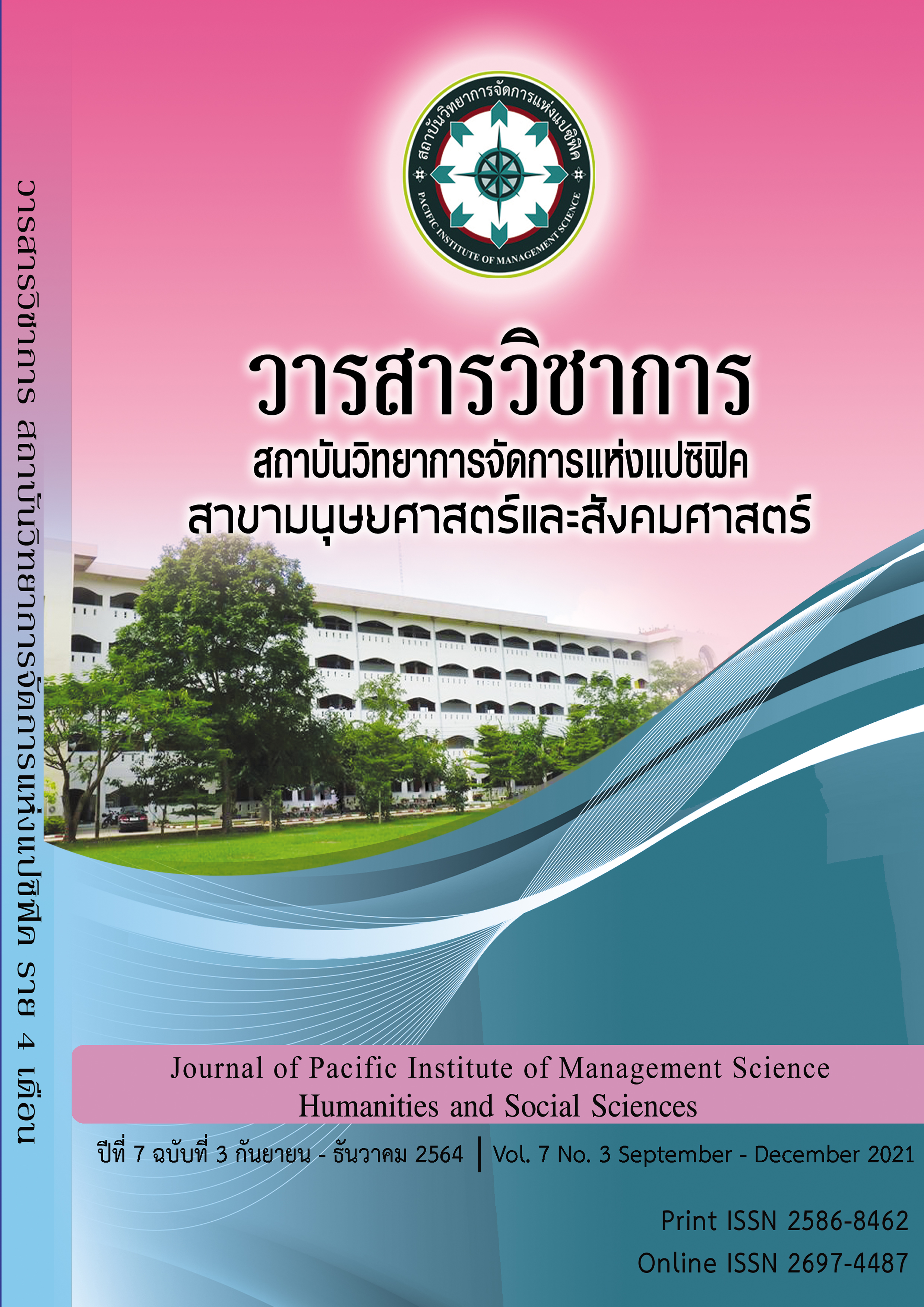Return, Risk and Volatility of Top Ten Vaccine Manufacturer Company Stocks
Keywords:
Investment, Return, Risk, Volatility, Vaccine Manufacturer StockAbstract
A number of medical studies have proven that the COVID-19 vaccine is effective in preventing people from becoming infected with COVID-19. Mostly all governments and organizations have pledged to buy billions of vaccine doses. Therefore, vaccine manufacturer companies stock had been in the focus of interest by many investors.
This research attempted to calculate and compare returns, risks, and volatility of the top ten vaccine manufacturer stocks during January 2020 to April 2021. This research chose to study only the top 10 of these companies according to Meticulous Research (2021), which provides the top ten world leading manufacturer in vaccines market in 2021. These companies were listed in the different stock market such as Euronext Paris, New York Stock Exchange, Tokyo Stock Exchange, Australia Stock Exchange and London Stock Exchange. Daily closing index prices were gathered during January 2020 to April 2021. All stock market prices had been converted to U.S. dollar.
This research utilized Excel (NumXL) add-in as a method of calculating return, risk and volatility by adopting Capital Asset Pricing Model (CAPM) for risk-return relationship, and EGARCH as volatility estimation. Based on the daily stock prices, the Exponential process is used in estimating and forecasting the volatility.
For comparison of the actual returns of the top 10 vaccine manufacturer stocks, the result shows that Daiichi Sankyo had the highest actual returns, which followed by Carlisle, Emergent BioSolutions, Johnson & Johnson, Merck, Pfizer, AstraZeneca, Takeda Pharmaceutical, GlaxoSmithKline and Sanofi.
For comparison of the systematic risk of the top 10 vaccine manufacturer stocks, the result shows that Daiichi Sankyo had the lowest systematic risk, which followed by Sanofi, AstraZeneca, Takeda Pharmaceutical, Pfizer, Johnson & Johnson, GlaxoSmithKline, Merck, Carlisle and Emergent BioSolutions consecutively.
For comparison of volatility of the top 10 vaccine manufacturer stocks, the result shows that Emergent BioSolutions had the highest stock volatility, which followed by Carlisle, Daiichi Sankyo, AstraZeneca, Pfizer, Takeda Pharmaceutical, GlaxoSmithKline, Merck, Sanofi, and Johnson & Johnson.
References
Arnold G. (2008). Corporate Finance Management. Pearson Education Limited: London.
Aydemir AB. (1998). Volatility Modelling in Finance. Reed Educational and Professional Publishing: Oxford.
Ball R. (1978). Anomalies in Relationships Between Securities Yields and Yield-Surrogates. Journal of Financial Economics. vol. 6. pp. 103-126.
Banz RW. (1981). The Relationship Between Return and Market Value of Common Stocks. Journal of Financial Economics. vol. 9. pp. 3-18.
BBC News. (2021). Coronavirus: How the pandemic has changed the world economy. [Online]. Retrieved April, 20, 2021, from https://www.bbc.com/news/business-51706225.
BBC News. (2021). COVID vaccine update: Those that work - and the others on the way. [Online]. Retrieved May, 23, 2021, from https://www.bbc.com/news/health-51665497.
Berument H. and Kayimaz H. (2001). The Day of The Week Effect on Stock Market Volatility. Journal of Economics and Finance. vol. 25. pp. 181-193.
Bruner et al. (1998). Best Practices in Estimating the Cost of Capital. Financial Practice and Education. vol. 8. P. 13.
Campbell JY. el al. (1997), The Econometrics of Financial Markets, Princeton University Press, New Jersey.
Cuthbertson K. (1996). Quantitative Financial Economics: Stocks. Bonds. and Foreign Exchange. London: John Wiley and Sons.
Gecgil Tezcan. (2020). 7 Innovative Stocks That Will Disrupt Their Sectors. [Online]. Retrieved January, 20, 2021, from https://finance.yahoo.com/news/7-innovative-stocks-disrupt-sectors-161153417.html.
Global News. (2021). Sanofi’s COVID-19 vaccine sees up to 100% efficacy in latest trial. [Online]. Retrieved May, 25, 2021, from https://globalnews.ca/news/7867858/covid-vaccine-sanofi-glaxosmithkline/.
Fama, E. F. (1970), Efficient Capital Markets: A Review of Theory and Empirical Work, Journal of Finance, vol. 25, pp. 383-417.
Fama EF. and French K. (1988). Dividend Yields and Expected Stock Returns. Journal of Financial Economics. vol. 22. pp. 3-25.
Harvey. CR. (1991). The World Price of Covariance Risk. Journal of Finance. vol. 46. pp. 111-157.
Ikenberry et al. (1996). What do Stock Splits Really Signal?, Journal of Finance, vol. 48, pp. 65-91.
Jegadeesh N. and Titman S. (1993). Returns to Buying Winners and Selling Loosers: Implications for Stock Market Efficiency. Journal of Finance. vol. 48. pp. 65-91.
Jensen. M. and Ruback. R. S. (1983). The Market for Corporate Control: The Scientific Evidence, Journal of Financial Economics. vol. 11. pp. 5-50.
Islam S. and Oh KB. (2003). Applied Financial Econometrics in E-Commerce: Contributions to Economic Analysis. North Holland Publishing. Amsterdam.
Islam S and Watanapalachaikul S. (2004). Empirical Finance. Springer: Heidelberg.
Jensen M. (1978). Some Anomalous Evidence Regarding Market Efficiency. Journal of Financial Economics. vol. 12. pp. 33-56.
Jensen. M. and Ruback. R. S. (1983). The Market for Corporate Control: The Scientific Evidence, Journal of Financial Economics. vol. 11. pp. 5-50.
McConnell JJ. and Muscarella C. J. (1985). Corporate Capital Expenditure Decisions and the Market Value of the Firm. Journal of Financial Economics. vol. 14. pp. 399-422.
Meticulous Research. (2021). Top 10 Manufacturers in Vaccines Market. [Online]. Retrieved May, 1, 2021, https://meticulousblog.org/top-10-companies-in-vaccines-market/.
Michaely et al. (1995). Price Reactions to Dividend Initiations and Omissions: Overreaction or Drift?. Journal of Finance. vol. 50. pp. 573-608.
Mills TC. (1999). The Econometric Modelling of Financial Time Series. Cambridge: Cambridge University Press.
Panna M. (2017). Note on Simple and Logarithmic Return. Debrecen: Center Print Publishing House.
Samuelson P. A. (1965). Proof that Properly Anticipated Prices Fluctuate Randomly. Industrial Management Review. vol. 6. pp. 41-50.
Sharpe W. (1966). Mutual Fund Performance. Journal of Business. January.
The Guardian. (2021). From Pfizer to Moderna: who's making billions from Covid-19 vaccines? [Online]. Retrieved May, 27, 2021, https://www.theguardian.com/business/2021/mar/06/from-pfizer-to-moderna-whos-making-billions-from-covid-vaccines.
Williamson. J. (1972). Measuring Mutual Fund Performance. Financial Analysts Journal. November/December.
Downloads
Published
Issue
Section
License
Copyright (c) 2022 Pacific Institute of Management Science

This work is licensed under a Creative Commons Attribution-NonCommercial-NoDerivatives 4.0 International License.
บทความที่ได้รับการตีพิมพ์เป็นลิขสิทธิ์ของ สถาบันวิทยาการจัดการแห่งแปซิฟิค
ข้อความที่ปรากฏในบทความแต่ละเรื่องในวารสารวิชาการเล่มนี้เป็นความคิดเห็นส่วนตัวของผู้เขียนแต่ละท่านไม่เกี่ยวข้องกับสถาบันวิทยาการจัดการแห่งแปซิฟิค และคณาจารย์ท่านอื่นๆในสถาบันฯ แต่อย่างใด ความรับผิดชอบองค์ประกอบทั้งหมดของบทความแต่ละเรื่องเป็นของผู้เขียนแต่ละท่าน หากมีความผิดพลาดใดๆ ผู้เขียนแต่ละท่านจะรับผิดชอบบทความของตนเองแต่ผู้เดียว







